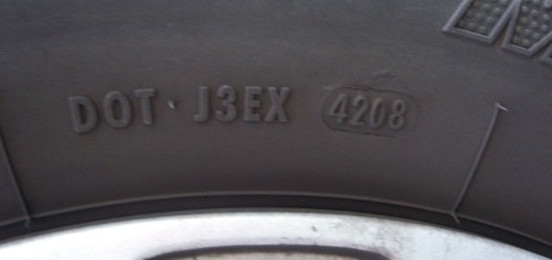Buying tyres between private individuals: beware of scams!
Changing tyres is essential, but it also costs money. You may be tempted to buy them from another private individual or from a professional selling on classified ad sites to save money, but don't forget that your safety also depends on the quality of the tyres on your car. This focus on the most common scams and our advice will help you to be better armed!
Poor quality retreading of used tyres
Retreading involves changing a tyre's tread and sidewalls. This is a complex technique, however, and can only be carried out by people who are expressly authorised to do so. Unfortunately, many weekend mechanics retread second-hand tyres with the intention of selling them on to other private individuals. Worse still, some remove the tread without actually changing it! We're telling you straight out: this is extremely dangerous, and can prove fatal.
Expired new tyres
You may not have known it, but tyres have an expiry date!
So it's not unusual to find new tyres at rock-bottom prices on classified ad sites. The secret of these dealers? These tyres, even if they are new, are too old to be sold through the official distribution channels.
As far as the expiry date is concerned, many people agree that a tyre can no longer be used 10 years after it has been manufactured, even if it has never been fitted and used on a car. The latest expert advice shortens this period to 5 or 6 years. So pay attention!
Check the tyre's date of manufacture
To see the date of manufacture of the tyre, refer to the markings on the sidewall.

The date is in the bubble on the right.
In this case, look at the 4 numbers in the bubble on the far right: they actually read 42 and 08. This means that the tyre was manufactured in the 42nd week of 2008. That's easy! So this tyre would simply be unusable today, even if it were new. So if it's second-hand, there's no need to tell you to move on!
Check the condition of the tyre
That's obvious, of course, but a number of points need to be checked.
The cuts :
Stone, glass, pieces of metal or any other foreign object can cause cuts in tyres. A cut will seriously weaken the tyre and can cause it to burst! If you notice any cuts on a tyre, you might as well move on.
Hernias :
A hernia appears as one or more bumps on the sidewall of the tyre. They are caused by damage to the metal structure of the tyre which, as it sags, is subjected to the pressure of the air inside the tyre. A hernia cannot be repaired and signals the end of the tyre's life. If you notice a bulge, do not buy the tyre!
Wear and tear :
It's obvious: a worn tyre should not be bought. To see if a tyre is worn, inspect the wear indicators. They can take various forms, such as pictograms from some manufacturers, but in almost all cases they are visible in the form of small rubber bumps in the grooves of the tyre.
If you don't have a special gauge, you can measure the state of wear of the indicators by running your finger over them. If they are at the same height as the tyre tread, then the tyre is unusable.
Here's what the wear indicators look like:

Use a secure payment method that allows the transaction to be traced
Of course, you must hand over the tyres in person in order to check their condition before any payment is made. For this stage, use Obvy to keep all the information about the seller in case you need it.
